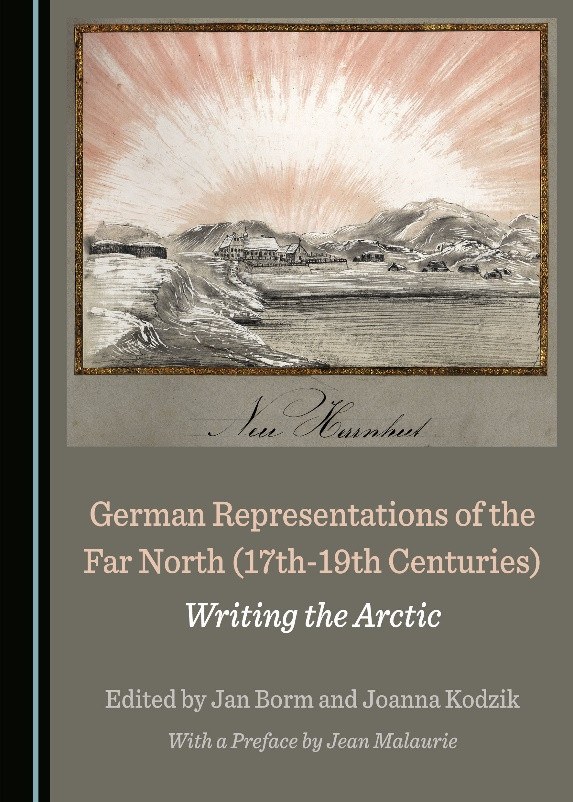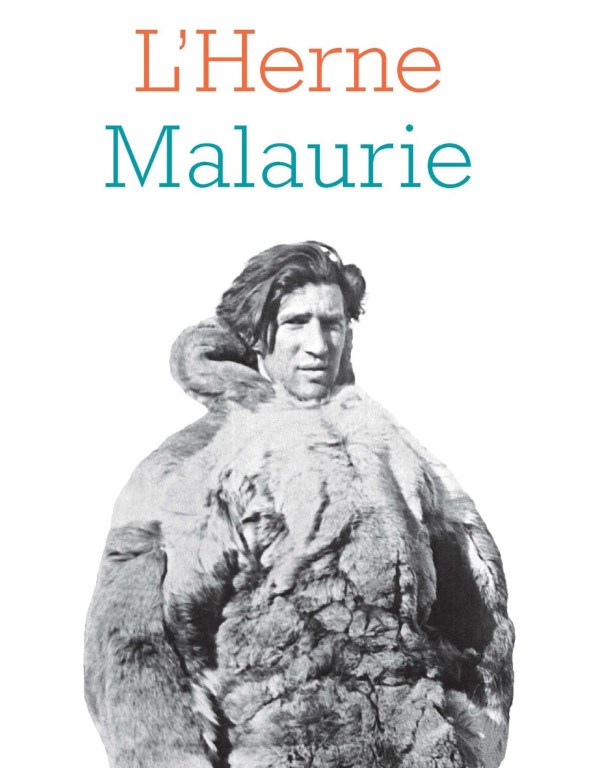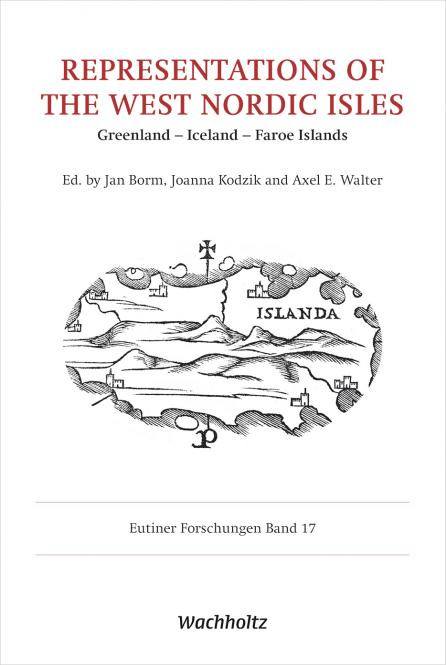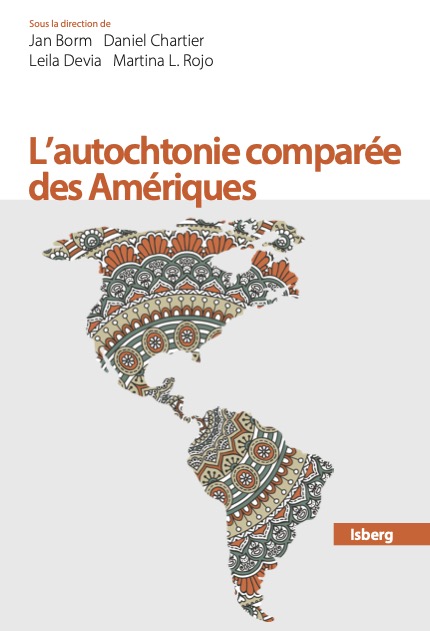German Representations of the Far North (17th - 19th Centuries) - Writing the Arctic

German travellers, explorers, missionaries and scholars produced significant new knowledge about the Arctic in Europe and elsewhere from the 17th until the 19th century. However, until now, no English-language study or collective volume has been dedicated to their representations of the Arctic.
Possibly due to linguistic barriers, this corpus has not been sufficiently taken into account in transnational and circumpolar approaches to the fast-growing field of Arctic Studies. This volume serves to heighten awareness about the importance of these writings in view of the history of the Far North.
The chapters gathered here offer critical readings of manuscripts and publications, including travelogues, natural histories of the Arctic, newspaper articles and scholarly texts based on first-hand observations, as well as works of fiction. The sources are considered in their historical context, as political, religious, social, economic and cultural aspects are discussed in relation to discourses about the Arctic in general.
The volume opens with a spirited preface by Professor Jean Malaurie, France’s most distinguished Arctic specialist and author of The Last Kings of Thule (1955).
https://www.cambridgescholars.com/product/978-1-5275-6022-2
Cahier de l’Herne Jean Malaurie

Pierre Aurégan and Jan Borm (eds.), Cahier de l’Herne Jean Malaurie, Paris: Éditions de l’Herne, 2021.
L’originalité de l’œuvre de Jean Malaurie s’appuie sur sa double nature d’écrivain et de scientifique de très haut niveau. Auteur du récit Les Derniers Rois de Thulé (1955), Jean Malaurie est par ailleurs le fondateur et directeur jusqu’à une date très récente de la prestigieuse collection Terre Humaine (aux éditions Plon), l’un des fleurons de l’édition française avec des titres aussi importants que Tristes Tropiques de Claude Lévi-Strauss ou encore Le Cheval d’Orgueil de Per-Jakez Hélias.
Ce Cahier souhaite mieux faire connaître, au-delà du cercle étroit des spécialistes, l’œuvre monumentale de Jean Malaurie, qui se développe sur plus de soixante-dix ans, en soulignant la diversité d’un travail pluridisciplinaire. Dans ce volume, géographes, philosophes, ethnographes, anthropologues et écrivains multiplient les éclairages, tentant de mettre en évidence les différentes facettes d’une vie qui s’est voulue engagée et libre de toute appartenance idéologique et les problématiques d’une œuvre protéiforme et passionnée. À côté de ces auteurs, des textes et documents inédits ou rares de Jean Malaurie (extrait du récit de voyage Hoggar, un texte sur son père, extrait de la correspondance avec Lévi-Strauss, lettres aux auteurs de la collection « Terre Humaine », échanges épistolaires avec ses correspondants groenlandais et inuit, extraits des carnets de terrain abondamment illustrés) soulignent l’œuvre du géomorphologue et de l’anthropologue, qui a contribué à renouveler le regard que nous portons sur les peuples premiers et les civilisations traditionnelles.
https://www.editionsdelherne.com/publication/cahier-jean-malaurie/
Representations of the West-Nordic Isles

Jan Borm, Joanna Kodzik and Axel E. Walter (eds.), Representations of the West Nordic Isles: Greenland – Iceland – Faroe Islands. Kiel: Wachholtz Verlag, May 2023
After the "discovery" of the New World, travellers, explorers, whalers, missionaries and scholars were inspired by secular rulers and religious authorities to choose new paths in the unexplored far north. The first-hand knowledge of the Arctic that travellers communicated in travel diaries from the 17th century onwards was valuable and triggered new ideas about man and nature during the European Enlightenment. Voyages to the North Atlantic brought new insights into islands and archipelagos such as Greenland and Spitsbergen, which were considered one until the 18th century, as well as Iceland and the Faroe Islands on the way to the far north. The travel narratives devoted to these islands have produced different, even contradictory, representations of space, culture and nature. The contributions in this volume discuss some of these narratives, from the earliest accounts to those from the 19th century, when they served as a reference for tourist exploration of the Arctic. The volume makes an important contribution to travel narrative research, to the history of the islands in the northern Atlantic, and to the emergence, dissemination and transformation of knowledge about this distant part of Europe.
https://www.wachholtz-verlag.de/Wissenschaft/Representations-of-the-West-Nordic-Isles.html
Download the table of contents
L'autochtonie comparée des Amériques. Droit et représentations culturelles

Jan Borm together with Daniel Chartier, Martina Lourdes Rojo and Leila Devia published a collective volume with multidisciplinary comparative articles on indigeneity in the Americas focusing especially on law and cultural representations.
Indigenous identity is a defining feature of the Americas. This collective essay is the result of a unique multidisciplinary collaboration between Quebec, Argentina and France, bringing together participants from indigenous communities (Abenaki, Aymara, Atikamekw, Innu, Mapuche and Wichí) and researchers from several disciplines. It places the issue of Indigenous territoriality in the Americas at the heart of contemporary political, legal and environmental issues. This book is part of an effort to explore and compare the various conceptions of territory and human relationships with the living world as perceived by Indigenous peoples across the Northern and Southern hemispheres. At the intersection of law, literary and cultural studies, research-creation, Indigenous studies and political science, this book brings together specialists who question the foundations, effects and underlying principles of Indigenous territoriality.
This publication is part of the project "Quebec-Argentina-France: Territoriality, Resources, Indigenous Peoples: Rights and Cultural Representations,‘ supported by the ’Inter-University Solidarity Projects in the Americas" programme of the Agence universitaire de la Francophonie (AUF), in collaboration with the Université du Québec à Montréal, the Universidad del Salvador, and the Université de Versailles—Saint-Quentin-en-Yvelines.

